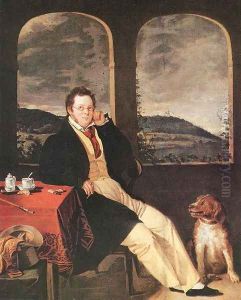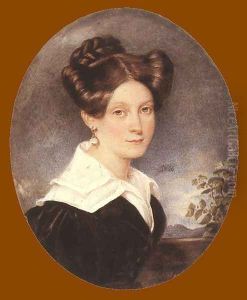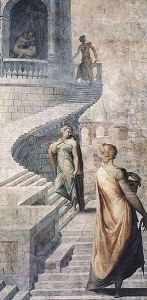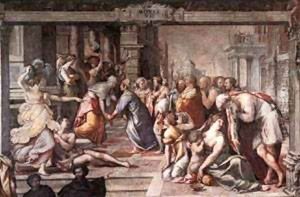Gabor Melegh Paintings
Gábor Melegh was a Hungarian painter known for his adept skills in portraiture and a fine example of European classicism in the 19th century. Born on October 22, 1793, in Buda, which is now part of Budapest, Hungary, Melegh showed an early interest in the arts. His talent was recognized, and he pursued his studies at the Vienna Academy between 1812 and 1815, where he was influenced by the neoclassical style prevalent at the time.
After his studies in Vienna, Melegh traveled and worked in different European cities, including Rome and Paris, which were major centers of art that provided him with further education and exposure to the broader trends and techniques in painting. The time he spent in Italy was particularly influential, as it allowed him to study the works of the old masters, thereby refining his technique and understanding of light, composition, and the classical ideals of beauty.
Returning to Hungary, Melegh became one of the leading portraitists of his time, capturing the likenesses of many notable figures in Hungarian society. His portraits are characterized by a strong realism, meticulous attention to detail, and a certain psychological depth in the representation of his subjects. Melegh's works were not limited to portraiture; he also painted historical scenes, although these are less known and celebrated than his portraits.
Throughout his career, Melegh remained engaged with the Hungarian art scene. His influence extended beyond his own works as he took on students and participated in the cultural life of Hungary. Melegh's legacy is preserved through his paintings which are held in various collections, including the Hungarian National Gallery in Budapest. He passed away on January 10, 1865, in Pest, Hungary, leaving behind a body of work that continues to be appreciated for its craftsmanship and place in the history of Hungarian art.




